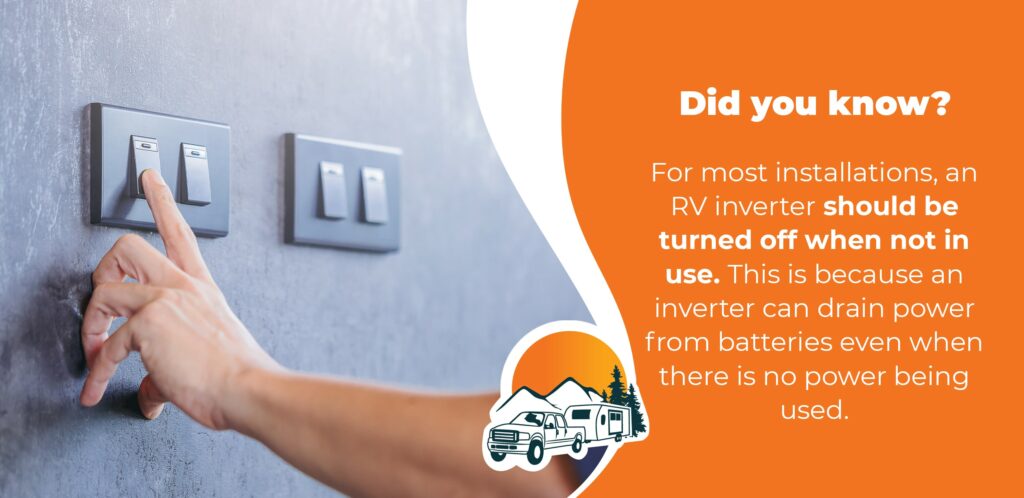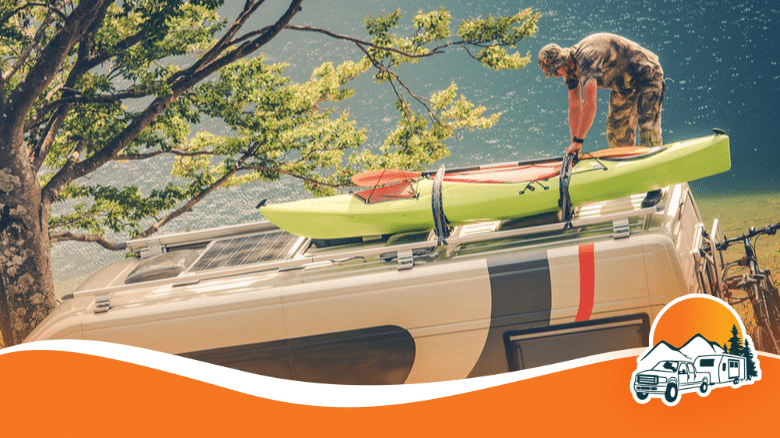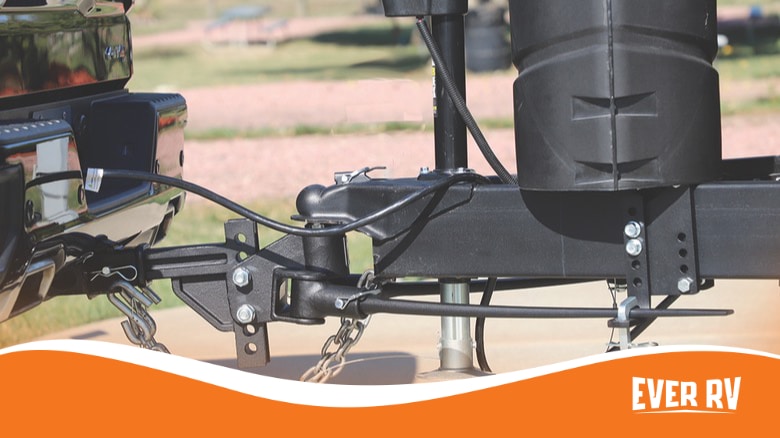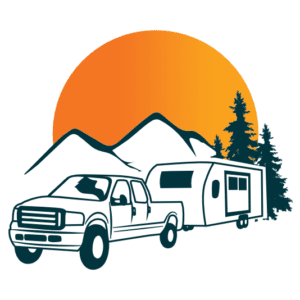Before you set out on the road with your RV, you need to get a few things straight. First of all, how do you plan to power your RV and the electrical components present inside it? Obviously, you would want to be able to connect your RV in a manner that powers all components.

Going for an off-grid connection will help you experience more freedom on the road and will ensure that you meet the expectations you have set for yourself. Before you decide on the best method of off-grid power for your RV, you will need to find an inverter that fits your requirements.
In this article, we discuss the suitable sizes for RV inverters and mention how big of an inverter you need inside your RV. Stay put because we have some well-researched info coming your way.
Explaining RV Inverters
RV inverters can best be explained by discussing the options for power inside your RV. Almost all of the electrical components inside your RV run on AC power of 120 to 230 volts. The characteristics of RV electrical components are pretty similar to what you have and experience at home. This is pretty similar to the electricity you receive from the electric grid powering your home.
So, if you connect your RV to a shore grid, you won’t need an inverter, as the power supply matches the requirements of the components.
However, during most of your journey, you will be powering your electric components with your DC batteries. These batteries run at a DC connection of 12V. While these batteries can run most small appliances like lights and windows, you will need an inverter to transfer the load of this supply and run high power electronics such as a coffee maker, a microwave, and a laptop, for instance.
Your RV inverter is a vital cog in your RV experience, as it ensures that you enjoy the journey and benefit from your electric appliances in the process. Sounds perfect, right?

How to Choose the Right Size Inverter?
The variety and options available when buying inverters are amazing. You can buy an inverter of pretty much every size. While this variety gives you the benefit of choice, it can also confuse buyers, especially RV owners.
So, what is the right size inverter for your needs? Consider asking yourself the following questions:
What do you Want to Power?
Before jumping on the inverter bandwagon, you need to know exactly what device you want to power. This will help you determine the right size inverter for your needs and what is expected of you.
You can begin your search process by creating a list of all the electronics you want to add to your RV. You can also add the watts of power required to run them comprehensively. Before you choose, you should also check the starting watt requirement and the running watt requirement. Most high-power electrical components need more watts to start. The electric devices can then run on fewer watts when they are in motion.
Once you have calculated the total electric requirement inside the RV, you can multiply it by an additional 20 percent and add that into the total count.
This total count will help guide you to the minimum inverter size you should have inside your RV. The 20 percent addition is necessary to protect inverter health and provide space for extra electrical components that you might have missed. Try not to miss any component.
What to Turn Off?
While it is a good idea to have everything up and running on your inverter and battery, it will benefit you to turn some things off. Always keep in mind that you will not be able to run everything on your inverter. It’s always a good idea to know the larger loads and how frequently you should and will be using them.
For instance, if you have a 2,000 watts inverter, you will have to be very careful while operating a microwave, an electric iron, or a hairdryer. These electrical components require high power surges to start. Before starting any of the equipment mentioned above, make sure that you turn other power sources off. You can also get a bigger inverter to power these components without fail quickly.
What is Your Battery Bank Type and Capacity?
As an RV owner, you should also match your inverter to the capacity and type of your battery. Your inverter should be ideal for a battery that doesn’t drain too quickly. An inverter that is too big for the battery will eventually drain the battery dry and leave nothing for later.
Based on our research and experience, you will need at least one 100Ah battery to power a 1000 watts inverter. The total inverter size you buy will be based on the calculations you performed above. If you are purchasing an inverter of 3000 watts, you should have at least three batteries of 100Ah each.
What is Your Inverter Range?
Almost all inverters in the market today provide a power range from 1,000 watts to 5,000 watts. The ideal inverter size for your RV should be somewhere around this.
Once you have calculated the total electric requirement inside the RV, you can multiply it by an additional 20 percent and add that into the total count. This total count will help guide you to the minimum inverter size you should have inside your RV.
Most RV owners use inverters that provide around 2,000 watts to 3,000 watts of electricity. However, there is no perfect size, as each RV owner has different needs.
Can You Power Your Entire RV with the Inverter?
Your inverter does not have to power the entire RV. Fortunately, you don’t have to power the whole RV with your inverter, so you can rest assured here. Powering your full RV will require an even bigger inverter, with more investments in the battery.
However, we believe that if you are boondocking and camping for more significant periods, you will need to connect every small component in your RV to an inverter. In a usual circumstance, where you are Rving on the road and making short pitstops, you can benefit from using your inverter on just a few components.
In most cases, RVers can hook the inverter to a subpanel in the RV. By hooking the subpanel, only two or three receptacles would be available to power other devices. This is enough for most RV owners to ensure that they have space available to charge their laptop, run their microwave, or even their coffee maker inside the RV.
If, however, you want to go the traditional way, you can get a hybrid inverter to power the entire RV. A hybrid inverter can mix power supply from both batteries and shore supplies to make sure that your RV is connected through the inverter at all times. This can help you connect your RV at all times and minimize damage.
Do You Need an Inverter for Your RV?
Before we conclude the article, let us answer the most obvious question that most users have – do you really need an inverter for your RV?
The answer to this question depends on the kind of RVing style you have. Do you want to park your RV in a campground most of the time on the road? If yes, then you will be connected to shore power at most times. If you are parked at camping grounds, you will have shore power available.
However, if you plan to visit secluded spaces and head out towards the boonies, then you will need an inverter to ensure that you remain connected. Additionally, you can also use an inverter to turn the power from your solar grid into the correct input for your electric components.
Even a small 1,100-watt inverter can be enough to turn your DC power into AC power and give you the kind of performance you need on the roads. A small 1,100-watt inverter will be enough to charge your laptop and phone and ensure that you are connected to the world. You can even scoot in a small TV to ensure the entertainment quotient doesn’t drop.
Live Your Off-Grid Life to the Fullest
If you plan to spend the majority of your time off-grid and want to move away from the camping grounds, you should definitely have an inverter with you.
As we mentioned earlier, an inverter can help turn the DC power from your battery into AC load, which is adequate for your electric sockets to function correctly. When deciding the right size for your RV inverter, you should go for something between 2,500 to 3,000 watts. This size works for most RV owners.
You should also do some more research at your end to find out your electric usage.







